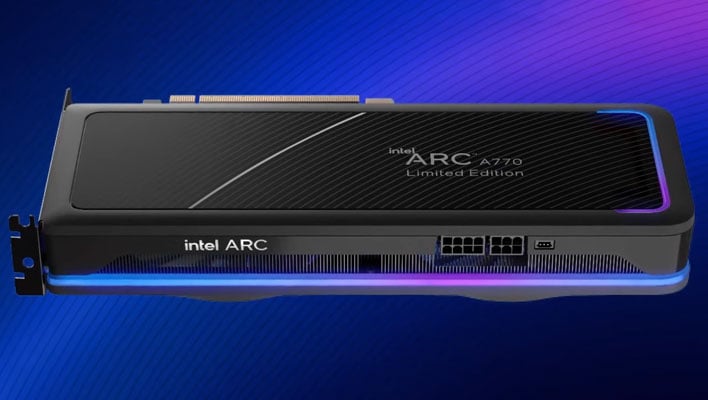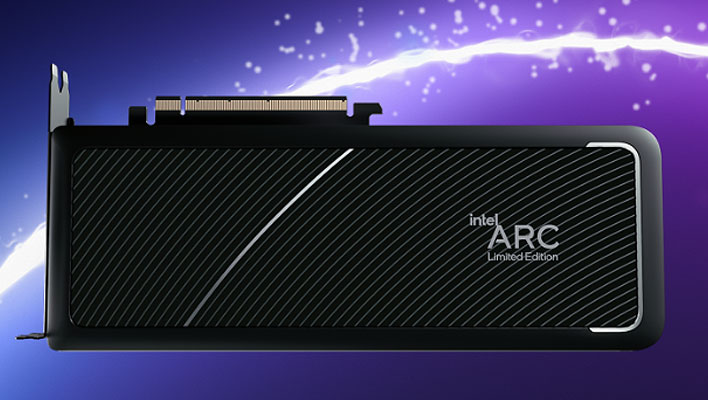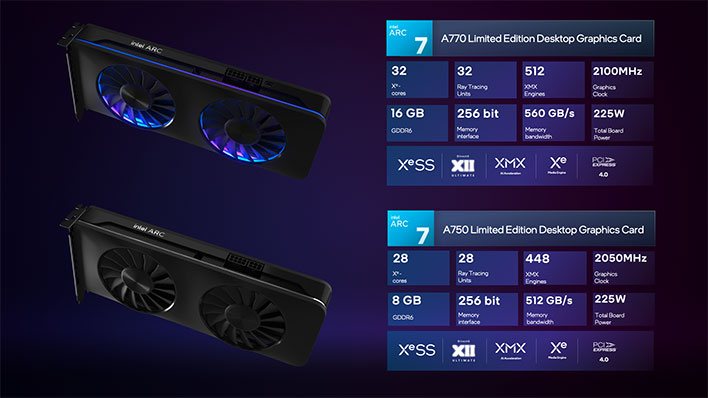Intel Reveals Arc Alchemist Desktop GPU Specs And Intriguing Limited Edition Details

Intel's journey into modern discrete GPU territory with its Arc graphics effort has been interesting, to say the least. It's also been a bit more staggered than most people hoped. Though to be fair, it's not easy designing a brand-new architecture from the ground up and then optimizing it for public consumption. Still, question marks remain over various details, some of which Intel has decided to shed light on in another appearance by Ryan Shrout and Tom "Tap" Petersen. Namely, the duo offered up clarity on its upcoming Arc Alchemist graphics cards, including Intel's own Limited Edition (LE) plans.
As Intel puts it, the company has been "dropping breadcrumbs on the upcoming desktop graphics cards," but is now ready for a more extensive specs reveal. It starts with a refresher course on the Arc A-series branding, as explained in the following 6-minute video...
At a high level we're looking at three tiers. They consist of the entry-level Arc 3 series ("Enhanced Gaming"), the mid-range Arc 5 series ("Advanced Gaming"), and the top-tier Arc 7 series ("High Performance Gaming"). This is similar to how Intel separates its CPU models into Core i3, i5, i7, and i9 designations, save for the lack of an Arc 9 series.
Actual model names for the initial launch include the Arc A380, A580, A750, and A770. The "A" in the model names denote that these are Alchemist parts, which is the first GPU architecture introduced with Arc. The digit that follows (3, 5, or 7) designates the tier that each part falls into as explained above, then there is a two-digit part number. Generally speaking, the higher the model number, the better the performance within a generation.
Intel Arc Alchemist Desktop GPU Specifications And Limited Edition Details
If you need a refresher course on the makeup of Intel's Arc architecture, we took a deep dive in our Arc Alchemist mobile GPU coverage earlier this year. The extremely truncated version is, as Tom describes in the video above, the Xe core is the "basic computation engine, so more Xe cores means more graphics performance and bigger dies."
As it applies to Alchemist, the already-released Arc A380 wields 8 Xe cores, along with 8 Xe ray tracing units, 128 XMX engines, 6GB of GDDR6 memory providing 186GB/s of memory bandwidth, and a 2,000MHz (2GHz) Graphics clock.
Next up on the totem pole is the Arc A580 with 24 Xe cores, 24 ray tracing units, 284 XMX engines, 8GB of GDDR6 memory, 512GB/s of memory bandwidth, and a 1,700MHz (1.7GHz) Graphics clock.
In the upper tier, the Arc A750 flexes 28 Xe cores, 28 ray tracing units, 448 XMX engines, 8GB of GDDR6 memory, 512GB/s of memory bandwidth, and a 2,050MHz (2.05GHz) Graphics clock, while the A770 boasts 32 Xe cores, 32 ray tracing units, 512 XMX engines, 8GB or 16GB of GDDR6 memory, 560GB/s of memory bandwidth, and a 2,100MHz (2.1GHz) Graphics clock.
Easy enough for the most part, though there are two points in need of clarification. The first is the Graphics clock. It's the only speed metric Intel provides at the moment, which notably leaves out base and boost clocks. Generally speaking, graphics cards do not run at fixed frequencies. The Graphics clock is the "average frequency these chips run across various heavy and light workloads." Or as Tom puts it, the Graphics clock is your "typical clock running a typical application in a typical environment."
Put another way, you can expect clock speeds to run faster than the Graphics clock half the time, and lower than the Graphics clock half the time.
The other thing to point out is the memory configuration on the Arc A770, which lists 8GB or 16GB of GDDR6 options.
"What’s up with the two numbers shown there? When our add-in card (AIC) partners build their own versions of Arc A770 cards, most will come with 8 GB of GDDR6 memory. The Intel-branded card (IBC)—our special A770 Limited Edition GPU—features double that," Intel states in a blog post.

According to Tom, the Arc A770 is "mostly an 8GB SKU," though Intel's board partners have the option of doubling up to 16GB on their custom models. Additionally, Intel will only offer 16GB on its Arc A770 Limited Edition model, and to further differentiate its own SKU, it will "do more crazy things like add RGB."
An abbreviation you might see going forward related to the Limited Edition SKUs is IBC, which stands for Intel Branded Card.
"With an IBC what we're talking about is Intel, since we're new to this market, we want to make sure we're putting our best foot forward," Tom explains. "Effectively we have partnered with some companies, we're building these cards in Malaysia directly. Intel is buying the components, we're building the board, we designed the board, we're building the cooler. All of it is coming together as if we were building this card ourselves, which is what we're doing."
There's still no word on when exactly Intel will launch its A580, A750, and A770 cards, though the company recently said it will be happening "very soon." Tom also says that Intel's Limited Edition cards will be available in e-tail and retail on launch day.



